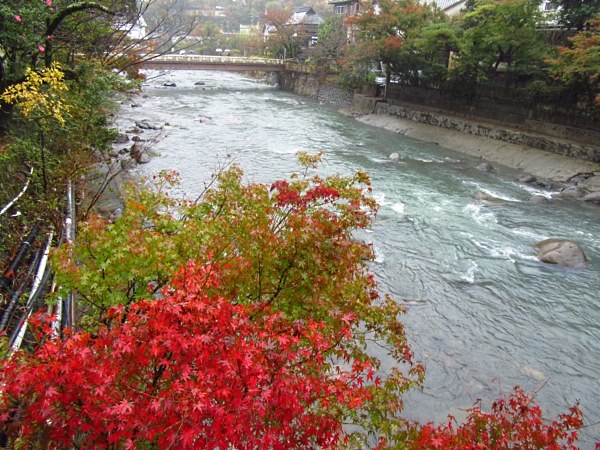Based on the questions I get from friends I figured out that I never wrote about how we choose where to travel. We can travel only in winter and November not to harm our B&B business.ᅡᅠ So we usually choose a country which is warm during that time or is relatively close to Lithuania where I visit my parents. This year Andrei happened to come across a big discount in plane tickets either to Japan or Australia. So we chose Japan for the reasons mentioned in Tokyo blog.ᅡᅠ But we had to catch some autumn colors which should be the highlight of our trip. They are so admired by Japanese! And they stay much longer intact versus sakura blooms. As we have a lot to do in our gardens and orchards in the fall, we chose to leave on the 18th of November for 14 days, which came to be only 13 days there. So the first advice – do stay there for at least 14 days because of the railway ticket that you buy for them – use it to its full dates. Then I take books from library and read and read and think where we would like to go, how far the distances, how are we going to travel – car, bus or train. Also – we have to pay attention to the weather forecast in the areas we plan to visit. This time the weather channels told us that the end of November is not rainy at all already, but it wasn’t the case as you will see in my next blog. We didn’t expect very warm temperatures, but the cold winds that Tokyo met us with were not anticipated. As I say – nothing is for free. In spite of that we say so many red maples, yellow ginkgo that the locals said usually at this time of the year they are mostly gone.  Next we look for hotels or guest houses through Air B&B, booking.com or expedia.com. There are many more websites to look for rooms or apartments. Then we ordered the 2 week JR – Japan Railway pass for $430 each and they send you the voucher for the ticket to your home. Once you are there you have to go to their office and get the actual pass after they check your passport – evidently they give us foreigners a discount and check if you are not on a working visa. Otherwise you can’t get that pass.
Next we look for hotels or guest houses through Air B&B, booking.com or expedia.com. There are many more websites to look for rooms or apartments. Then we ordered the 2 week JR – Japan Railway pass for $430 each and they send you the voucher for the ticket to your home. Once you are there you have to go to their office and get the actual pass after they check your passport – evidently they give us foreigners a discount and check if you are not on a working visa. Otherwise you can’t get that pass.
For this trip we chose to the as I call -“the main part” of Japan. Where their old capitals were, were most of historical action was. So: Tokyo 2 days 3 nights to get out of jet-lag, Hakone 2 nights to try to hike on a mountain and see Mt. Fuji (that didn’t happen due to pouring rains), Takayama 2 nights, Kanazawa 2 nights and Kioto 5 nights. Takayama is not as big and has a preserved and big old town, Kanazawa has one of the tree best Japanese gardens and also a castle and Nara is close to Kioto, we can see it on a day trip. When we look for rooms to stay – we take into consideration the places of interest in each town or city and also the proximity to the train station. And then we look for train schedule once we get to Tokyo, how are we going to reach our hotel, that is all. Then we have to have faith that everything will be fine. Nowadays even Tokyo didn’t seem hard to navigate-ᅡᅠ you download its map on the app Maps-me and you see where you are each time you are thinking which street to take. In the train stations – it is also easy to find the right track – they have English speaking people in bigger stations who would direct you where you need to go, or you just look on the information screens and figure out. Here is the catch! The pass does not cover all train rides. The trains there have numbers and names. So you have to read a little before the trip about them. There can be a bullet train as we call it, and they call it Shinkansen – and if it is written “super express” on it- it may mean that it will stop in every stop and will be slower that the train which is leaving is 20 min after it… On other trains “Limited express” is the best bet – it stops in a limited number of stops. I felt that they have a little different way of thinking than we do :-). Best luck traveling!